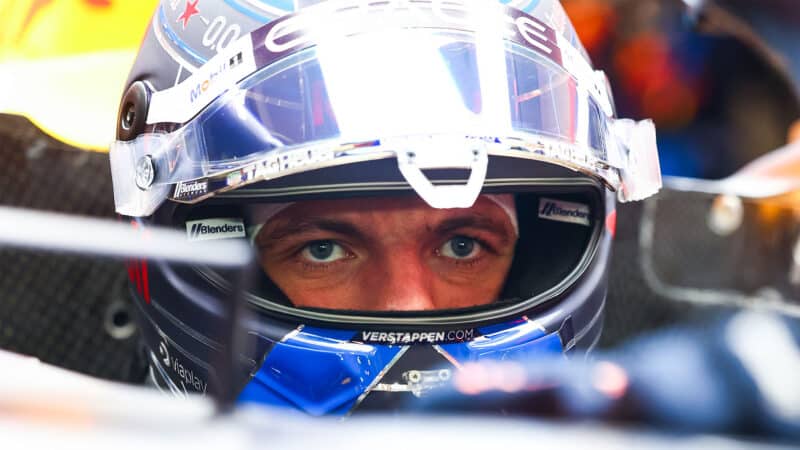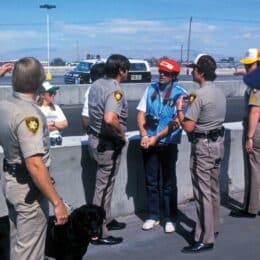But for all the striking parallels, there was a lot that was very different. For one thing, the 1981 race was not an intrinsic, co-ordinated part of F1’s business plan. F1 had not bought the land needed to service the event or worked hand-in-hand to ensure the event worked for the city. It was hosted by a promoter, gambling on making a quick buck after he had paid F1 its hosting fee. Whether he succeeded or not wasn’t really Bernie Ecclestone’s concern; just so long as he paid up. The event didn’t involve closing the whole Vegas strip down to traffic for a week; it was held in the confines of a big car park, off to the side of where the casino action was. This was F1 in its early expansionist entrepreneurial era, the commercial wild west.
Another difference: Piquet couldn’t have made much witty banter with his race engineer even if he’d had a radio (he didn’t). He was barely conscious by the end of the race, suffering heat exhaustion, in sharp contrast to this year when many drivers were reporting they were too cold in the car! That’s the desert for you, for the ’81 event was daytime Vegas, not night time.

Piquet (centre) did just what he had to when he claimed an F1 crown in Vegas too – but clearly looks worse for wear
DPPI
Piquet’s main title rival was Carlos Reutemann who had set a brilliant pole position in his Williams, over 0.3sec faster than Piquet’s fourth-fastest Brabham. Ligier’s Jacques Laffite was an outside title contender. Reutemann faded spectacularly on race day and Piquet was able to pass him for fifth place, even though by then he was already having trouble staying focussed as the heat exhaustion took a hold. Reutemann dropped to eighth and with Laffite only sixth, Piquet was the champion. Dominant winner of the race was Alan Jones, the 1980 World Champion driving his last race for Williams before taking a (temporary) retirement back to his farm, in Australia.
Which brings us to another crucial difference to last weekend. While Verstappen ponders how much longer he’s going to continue – “I don’t want to be racing by the time I’m 40. I don’t want to have spent half my life racing cars.” – Piquet didn’t feel he needed to think about what came after F1. In detached moments, he admitted, he expected one day to lose his life in a racing car. It was a realistic assessment even though it didn’t come true; that’s just how it was then.




